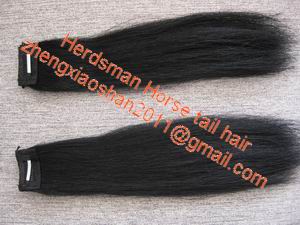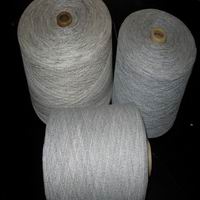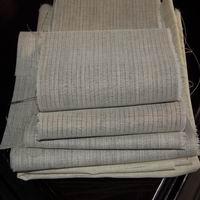you can certainly attempt that. horse hair braids
,Linda Ann Nickerson,horse hair braids Yahoo Contributor Network
Jun 14, 2007 Share your voice on Yahoo websites. Start Here.
A horses mane is usually braided, or plaited, for competition in combined driving, combined training, dressage, driving, hunting, jumping, parades, racing, vaulting, and many other disciplines. Braiding is part of preparing to show a horse to his best advantage. Clean, neat braids greatly enhance the appearance of the entire horse, particularly his lovely arched neck. Horse show judges examine the entire package, horse and rider, and good grooming may spell extra respect and points in the show ring.
Previous Practice
Hopefully, you have already practiced braiding on a friend, a doll, or your own hair.
Ideally, you can practice braiding your horses mane long before you sign up for your first horse show. Its best to learn this well before the pre-show jitters set it! The best time to practice together is after a schooling session, when your horse is well-exercised and relaxed.
Workshops and clinics are available, where you can learn this firsthand. (Check local equestrian publications and tack-store bulletin boards for local information.)
Preparing Your Partner
Pulling the mane is the generally approved method for thinning and tailoring it, as preparation for braiding. Various riding disciplines have standards for mane lengths, which also depends on the breed of the horse. Thick, dense manes are usually left a bit longer than thin, wispy ones.
Basically, the mane should be no longer than 4 - 4 ½ inches for traditional braiding.
Mane-pulling is easiest to do after a horse has been exercised. The horse tends to be calmer, and his hair follicles release the strands easier when they are warmed up. Its best to plan mane-pulling in several short sessions, rather than expecting the horse to tolerate the entire process at one time.
Securing Your Supplies
You will need: a braiding comb, a toothy hair gripper-clip, small rubber bands (available at tack stores or beauty supply outlets),English. sticky hair gel, and a water spray bottle.
Advanced braiders use a large needle and knitting yarn for braiding. Yarn braids can be pulled much tighter than elastic band braids, but they require nimbler fingers and can be tricky to do. Once you master the procedure, you can certainly attempt that.
Try to select elastic bands to match the color of the horses mane.
Bathing for Beauty
The horse should be bathed the day before the show. However, it is best to wait until the morning of the show for braiding, if possible, so the braids will be fresh and neat. (A lot can happen in a horses stall overnight.)
Dont condition or Show-Sheen mane or forelock. You will not want to work with slippery hairs! Also, slightly wet hair is easier to braid.
Plaiting for Presentation
Put the horse in cross ties, or tie him off in a stall. Stand on the r side of the horse. That is the horses right side. Use a stepstool to reach.
Start at the top of the horses mane, just behind his ears. Lightly spray the horses mane with water. Comb out tangles.
A plaiting comb will help you to measure the width of the braids you will make. (In place of this, you can use a plastic hair comb. Break off a couple of teeth, about one inch from one end.)
Use the comb, and measure the first braid. Hold this clump of hair in your right hand, and clip the rest of the mane out of your way with the gripper-clip.
Divide the first clump into three sections. Fold the right-hand section over into the middle,horse hair braids and pull the middle section under to the right. Now fold the left-hand section over into the middle, and pull the middle section under to the left. Continue (right, then left) to the ends of the hair. Fasten with a rubber band.
Repeat with another measured clump of hair. Continue all the way to the horses withers.
Beginning behind the horses ears again, roll each braid under (to form little buttons), and sten with another rubber band. (Tuck ends under, so they do not show.) Apply hair gel to control any loose ends.
White braid clips are available for dressage horses. These clip right over the finished braids and cover rubber bands or yarns. These are only recommended for advanced-level horses, however, as they call even greater attention to the position of the horses neck throughout the riding class.
With practice, most people can braid a horses mane in about 30 - 40 minutes.
Additional Braiding Options:
French braids have become popular for horse shows, particularly for longer-maned horses, such as Arabians and Freesians. These are done in the same manner that little girls hair is braided. A single chunky braid lines the crest of the horses neck and is stened by his withers. French braids are also quite handy for hot-weather workouts and grazing in the summer sun.
Employing a Professional
At the show-grounds, braiding services may be offered by professionals. Additional services may include body clipping, point clipping and mane pulling. In addition, many equestrian trainers will offer to braid their clients horses for a fee.
However, braiding ones own horse is an excellent way to prepare together for a show, build additional horse/rider trust, and save lots of money.
Removing the Braids
After a show, removing the braids is an excellent time of relaxed togetherness for horse and rider. Using a seam ripper (available at bric stores or sewing departments of discount stores), clip off the rubber bands or yarns. Be careful not to clip the horses hair when doing so.
Leaving the braids in place after a show is not recommended, as he may damage his mane by rubbing his braids in the stall or on a pasture fence.
Published by Linda Ann Nickerson
Linda Ann Nickerson brings decades of reporting and a globally minded Midwestern perspective to a host of topics, balancing human interest with history, hard cts and often humor. View profile
查看相关产品:












